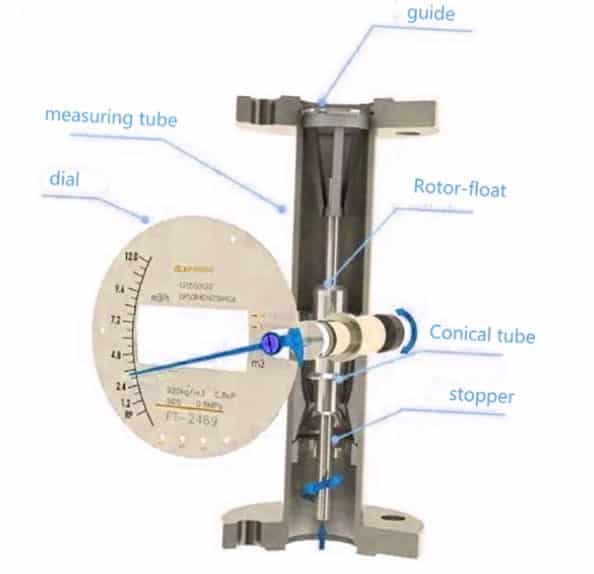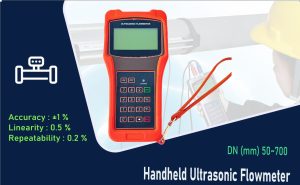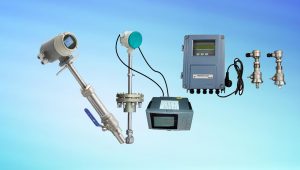In the world of industrial operations, accurate flow measurement is critical. Whether it’s managing water treatment processes, monitoring chemical reactions, or optimizing fuel delivery, the ability to measure fluid flow reliably can determine the efficiency and safety of entire systems. Among the many devices available, metal tube variable area rotameters stand out as one of the most dependable yet often overlooked instruments.
These devices may not grab as much attention as their high-tech digital counterparts, but they are workhorses of flow measurement—offering durability, versatility, and cost-effectiveness in harsh industrial environments. This article dives into why metal tube rotameters deserve recognition as the unsung heroes of flow measurement.

1. What Is a Metal Tube Rotameter?
A metal tube rotameter is a type of variable area flow meter. Unlike glass rotameters, which are transparent and suitable for clean, low-pressure applications, metal tube rotameters are designed with a robust metal body to handle high pressures, extreme temperatures, and aggressive fluids.
The working principle is simple: as fluid flows upward through the tapered tube, it lifts a float. The float rises until the upward force of the fluid equals the weight of the float, stabilizing at a point that indicates the flow rate.
This elegant simplicity is what makes the metal tube rotameter both reliable and easy to maintain.
2. The History and Evolution of Rotameters
Rotameters date back to the early 20th century, originally developed as glass tube devices. Over time, industries needed more rugged equipment to withstand higher demands, leading to the development of metal tube rotameters.
Today, metal tube rotameters are used across industries such as:
-
Oil and gas – for monitoring fuel, gas, and water injection.
-
Chemical processing – for handling corrosive fluids under pressure.
-
Power plants – for cooling water and steam measurement.
-
Food and beverage – for hygienic flow measurement under sanitary conditions.
The transition from glass to metal opened the door for industrial-scale applications, cementing the rotameter’s reputation as a trusted tool.
3. How Does a Metal Tube Variable Area Rotameter Work?

The principle of operation is based on fluid dynamics and balance of forces:
-
Fluid enters the tube from the bottom.
-
The float moves upward, finding a point of equilibrium between the downward gravitational force and the upward drag force of the fluid.
-
The position of the float corresponds to a calibrated flow scale, making the reading simple and intuitive.
The “variable area” part comes from the tapered shape of the tube: as the float rises, the annular area between float and tube increases, allowing more fluid to pass through until equilibrium is achieved.
4. Key Advantages of Metal Tube Rotameters
Here’s why industries trust metal tube rotameters:
-
Durability: Made from stainless steel, Hastelloy, or other alloys, these devices can withstand high pressures and corrosive chemicals.
-
Wide range: Suitable for gases, liquids, and steam, across varying flow rates.
-
No external power: Many models work mechanically without electricity, making them ideal for remote sites.
-
Clear indication: The float’s position provides a direct, real-time flow reading.
-
Minimal maintenance: With few moving parts, breakdowns are rare.
This combination of ruggedness and simplicity makes them ideal for tough environments.
5. Applications Across Industries
Metal tube rotameters find use in a wide spectrum of applications:
-
Oil & Gas: Monitoring natural gas, crude oil, and injection water.
-
Pharmaceuticals: Measuring precise flow rates in cleanroom processes.
-
Power Generation: Ensuring cooling water and steam distribution.
-
Wastewater Treatment: Monitoring influent and effluent flows.
-
HVAC Systems: Controlling refrigerant and chilled water flow.
Their versatility is unmatched, making them indispensable in industries where other meters might fail.
6. Why They Outperform Other Flow Measurement Devices
While digital flow meters and electromagnetic devices often get the spotlight, metal tube rotameters have their own unique advantages:
-
Cost-effectiveness: They are much cheaper than advanced electronic flow meters.
-
Resilience: Less sensitive to dirt, particulates, and changing fluid conditions.
-
Independence: Mechanical versions don’t rely on electricity, ideal for hazardous areas.
-
Longevity: With proper calibration and care, they can last for decades.
In many cases, industries prefer them over sophisticated alternatives because they provide practical reliability without overcomplication.
7. Limitations and Challenges
Of course, no instrument is perfect. Metal tube rotameters do have some limitations:
-
Accuracy: Typically ±1–2% of full scale, not as precise as advanced digital meters.
-
Manual reading: Unless equipped with transmitters, they require human observation.
-
Limited remote monitoring: Without add-ons, they don’t integrate seamlessly with digital systems.
Still, for many industries, the benefits outweigh these limitations—especially in cost-sensitive or rugged environments.
8. Digital Integration: Modern Metal Tube Rotameters
In today’s digital age, many manufacturers have upgraded metal tube rotameters with:
-
Electronic transmitters for remote data logging.
-
4–20 mA outputs for integration with SCADA or PLC systems.
-
Alarm functions for flow deviations.
-
HART or Modbus communication for advanced monitoring.
This evolution ensures that metal tube rotameters remain relevant in Industry 4.0 applications while preserving their mechanical reliability.
9. Maintenance and Calibration Tips
Proper care extends the life and reliability of metal tube rotameters:
-
Routine inspections: Check for dirt, scaling, or corrosion.
-
Calibrate periodically: Maintain accuracy by verifying against standards.
-
Replace seals and gaskets: Prevent leaks and ensure smooth operation.
-
Avoid shock loads: Sudden flow surges can damage the float or tube.
With regular maintenance, a metal tube rotameter can easily outlast many other types of flow meters.
10. Future of Metal Tube Rotameters
Despite being a century-old technology, metal tube rotameters are evolving:
-
Smart designs with built-in diagnostics.
-
Materials innovation for handling more aggressive fluids.
-
Hybrid systems that combine mechanical reliability with digital accuracy.
-
Compact designs for integration into modular industrial systems.
This ongoing development proves that even traditional instruments can adapt to modern industrial needs.
11. Why Metal Tube Rotameters Are the Unsung Heroes
When compared to flashy, high-tech flow meters, metal tube rotameters may seem modest. But their ruggedness, reliability, and versatility make them indispensable in industries worldwide.
They thrive where others fail—harsh environments, remote sites, or cost-sensitive projects. That’s why they remain unsung heroes, quietly ensuring that industrial processes stay safe, efficient, and reliable.
Conclusion
The metal tube rotameter might not be the most glamorous flow meter on the market, but it is certainly one of the most trusted and reliable. With their ability to handle extreme conditions, provide straightforward readings, and integrate into modern monitoring systems, they prove their value daily across countless industries.
So next time you think of flow measurement technology, remember: the unsung hero keeping processes in check might just be a simple metal tube rotameter.
We are a manufacturer of automatic flow meters with many years of experience in the industry. We have strong independent research and development capabilities and are a leader in the flow meter industry. Our main products include electromagnetic flow meters, vortex flow meters, turbine flow meters, ultrasonic flow meters, Coriolis flow meters, various solenoid valves, level meters, control units and valves, etc. Welcome to purchase –KFBEST




